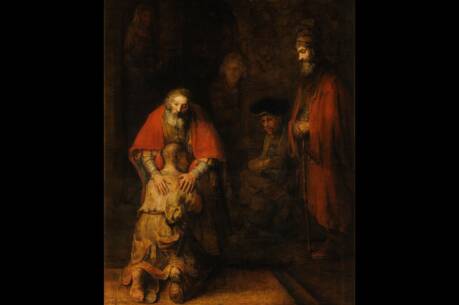Even when you feel inadequate, Christ is enough.
Few episodes from Jesus’ ministry appear in all four Gospels. Among these common traditions, the feeding of the 5,000 is the only miracle that all four Evangelists recount. Matthew and Mark even include second instances of this story, so Jesus’ miraculous feeding of a crowd appears six times in the Gospels. This narrative probably resonated strongly with early Christians for two reasons: It spoke to their experience of the Eucharist, and it resembled their own care for the poor.
‘He himself knew what
he was going to do.’ (Jn 6:6)
When have you felt inadequate to a task?
Among your inadequacies, which can you entrust to Christ's care; which do you prefer to try to deal with on your own?
We know little about the actual liturgical practices of the first Christians, but a repeated motif was their experience of Christ’s presence during the ritual sharing of bread and wine. Although ritual accounts primarily referred to the Last Supper, multiplication narratives like the one we read this Sunday might have called to mind the rapid expansion of the church in its early decades. Ever-growing numbers of Christians met for the breaking of the bread, and Christ had something to share with them all.
Closely related to this were the ministries of benevolence that characterized the early church. Among the non-Christians of the Roman Empire, Christians were known for feeding the hungry. Even an emperor hostile to the church noted that Christians “support not only their own poor, but ours as well.” Following Christ’s example and teaching, Christians always found enough to satisfy the hungry who turned to them for food.
In John’s mind, this narrative is proof that the messianic era had already begun. John wrote later than the other Evangelists, near the end of the first century. Mark wrote with great expectation that Christ would come again soon. Matthew and Luke recognized that the return was delayed, but still believed it to be near. John, while never giving up hope of Christ’s future arrival, turned his attention to the belief that the expected age had in fact already started. Its benefits were available to any who believed in Christ and followed his example of loving service.
Many believed the arrival of the Messiah would coincide with a return of the manna that fed Israel during and after the Exodus from Egypt (e.g., 2 Bar 29:8). John places the multiplication of the loaves at the start of his “Bread of Life” discourse to make exactly this claim about Jesus. On the Sundays of August this year, the church will hear John’s insights on the life of abundance available to any who follow Christ.
One detail of John’s theology stands out as a challenge for Jesus’ disciples today. In Jn 6:10, Jesus tells the people to recline before they receive their bread. The new bread of heaven is a free gift of Christ, requiring no effort on the part of those who receive it. This makes a stark contrast to Ex 16:26, in which the gathering of manna is laborious, and not permitted on the Sabbath.
Christ’s disciples today can benefit from the same lesson. Humanity’s need for redemption is immense. The available resources might look like a handful of stale bread and a few anchovies. We must always remember that the task is Christ’s. Our primary job is to place ourselves at peace in his presence and follow his commands. His grace will fulfill the work.
This article also appeared in print, under the headline “Grace in Abundance,” in the July 23, 2018, issue.








